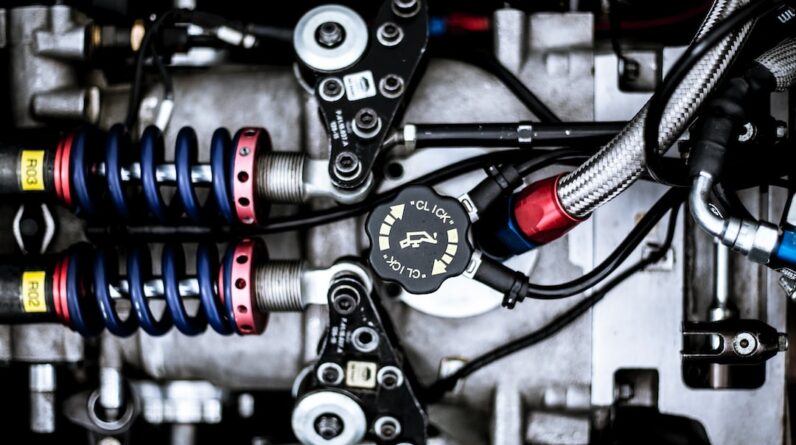Are you in the market for a used car? Before you make that important purchase, it’s crucial to thoroughly inspect the vehicle to ensure it meets your standards. That’s where a comprehensive used car inspection checklist comes in handy.
In this article, we will provide you with a step-by-step guide to help you evaluate a pre-owned vehicle before making a decision. By following this checklist, you can uncover potential issues and make an informed choice.
The inspection checklist covers all the important areas, from the engine and mechanical components to the car’s overall performance during a test drive. Additionally, we’ll provide you with a list of questions to ask the seller, ensuring transparency and peace of mind.
Buying a used car can be a daunting task, but with the right knowledge and tools, you can make a confident purchase. So, let’s dive into the world of used car inspections and equip yourself with the necessary tools to make a wise decision.
Key Takeaways
- Thorough inspection is crucial before buying a used car
- A comprehensive checklist helps evaluate the vehicle’s engine, mechanical components, and overall performance
- Asking the seller questions promotes transparency in the buying process
- A pre-purchase inspection identifies hidden issues, validates the vehicle’s history report, and provides peace of mind
Introduction to Used Car Inspection Checklist
When it comes to buying a used car, a pre-purchase inspection is of utmost importance. This inspection allows you to thoroughly evaluate the vehicle before making a purchase, ensuring that you are aware of any potential issues or hidden problems.
In this guide, you can expect to find a comprehensive checklist that will walk you through the key points to look for during the inspection, providing you with the knowledge and confidence to make an informed decision.
Importance of a Pre-Purchase Inspection
Although it’s commonly believed that a pre-purchase inspection is unnecessary, the truth is that it can provide valuable insights into the condition of a used car. By conducting a thorough inspection using a trusted mechanic and a comprehensive inspection checklist, you can uncover potential issues that may not be apparent during a test drive. Additionally, a pre-purchase inspection can help validate the information provided in the vehicle history report, giving you peace of mind in your used car buying decision.
| Benefits of a Pre-Purchase Inspection |
|---|
| Identifies hidden issues |
| Validates vehicle history report |
| Provides peace of mind |
| Helps negotiate a fair price |
What to Expect in this Guide
Get ready to discover exactly what you can expect from this helpful guide packed with valuable information. In this comprehensive guide on vehicle inspection, we’ll provide you with a detailed and objective overview of the pre-purchase evaluation process.
You’ll find a comprehensive used car inspection checklist that covers all the essential aspects to consider before buying a used car.
Stay tuned to learn what to expect and make an informed decision.
Preparing for the Inspection
To prepare for the inspection, gather the necessary tools such as a flashlight, a tire pressure gauge, and a mirror. These tools will help you thoroughly evaluate the condition of the used car.
Additionally, make sure to schedule the inspection at a time that’s convenient for both you and the seller. This’ll ensure that you have enough time to carefully examine the car and ask any questions you may have.
Gathering Necessary Tools
During the used car inspection, it’s essential to have all the necessary tools readily available. Here are three items you’ll need to ensure a thorough evaluation:
- Flashlight: To inspect dark areas and identify potential issues.
- Tire pressure gauge: To check for proper tire inflation.
- OBD-II scanner: To diagnose any hidden electronic problems.
Having these tools on hand will help you conduct a comprehensive inspection and make an informed decision when evaluating a used vehicle. If you’re not confident in your abilities, it’s always a good idea to consult a mechanic or utilize a pre-purchase inspection checklist.
Scheduling the Inspection
Once you’ve mustered up the courage to actually go through with it, it’s time to schedule that all-important inspection for your potential new ride.
Scheduling the inspection is a crucial step in the process of buying a used car. It allows you to ensure that the car is in good condition and worth your investment.
You can coordinate with the seller or dealership to find a convenient time for the inspection.
The Comprehensive Used Car Inspection Checklist
When conducting a comprehensive used car inspection, it’s crucial to start by checking the car basics. This includes examining the engine, transmission, and fluid levels to ensure everything’s in working order.
Next, perform a thorough body inspection, looking for any signs of previous accidents or damage. Evaluate the wheels and tires, checking for tread wear and proper inflation.
Move on to the interior assessment, examining the seats, dashboard, and electronics for any signs of wear or malfunction.
Finally, don’t forget to conduct an undercar inspection, inspecting the suspension, exhaust system, and any potential leaks.
By following this checklist, you can ensure a thorough evaluation of the used car’s condition.

Checking the Car Basics
First, take a look at the car basics and make sure to check for any visible damages or signs of wear and tear. To ensure your safety and avoid future expenses, pay attention to these three important aspects:
- Check the brakes: Inspect the brake pads and discs for excessive wear or damage.
- Look for leaks: Check underneath the car for any signs of fluid leaks, such as oil or coolant.
- Examine for rust: Inspect the body for any rust spots, especially around the wheel wells and under the car.
Also, don’t forget to evaluate the tread depth of the tires and the condition of the steering wheel.
Body Inspection
Make sure to thoroughly inspect the body of the vehicle for any dents, scratches, or paint chips that may indicate previous accidents or poor maintenance. For example, you might notice a small dent on the driver’s side door, suggesting a minor collision in the past.
Check the bodywork for any signs of rust or corrosion, as this could indicate potential structural issues.
Additionally, pay attention to any abnormal vibrations or uneven tire tread, as these could indicate alignment or suspension problems.
Wheel and Tire Evaluation
Take a close look at the wheels and tires to ensure they’re in optimal condition and ready for the road ahead. Check for signs of tire wear, such as uneven tread depth or bulges. Inspect the brake fluid for any leaks or signs of wear. Look for rust or corrosion on the wheels and underneath the car. By thoroughly examining the ground and undercarriage, you can identify any potential issues that may affect the car’s performance and safety.
Interior Assessment
As you step inside the vehicle, you can’t help but feel a sense of anticipation as you prepare to discover what secrets the interior holds. Begin your interior assessment by checking under the hood.
Look for any signs of wear or damage, such as torn upholstery or stains. Take note of the condition of the panels, making sure they’re free from cracks or scratches.
Also, inspect the windows for any cracks or chips that may need to be repaired.
Under the Car Inspection
Upon descending beneath the vehicle, inspect the vehicle thoroughly to ensure a comprehensive evaluation of its condition.
Look for signs of leaking, such as oil or coolant stains.
Examine the brake lights to ensure they’re functioning properly.
Check the engine for any visible damage or leaks.
It’s crucial to conduct a detailed under the car inspection to uncover any potential issues that may affect the vehicle’s performance and safety.
Check Under the Hood: Engine and Mechanical Inspection
When examining the engine of a used car, it’s important to check for any signs of leaks or rust that could indicate potential issues. Look closely at the engine components to ensure they’re in good condition and functioning properly.
Additionally, assess the suspension and frame to make sure there aren’t any signs of damage or wear that could affect the car’s performance and safety.
Engine Examination
Start by checking the engine for any visible signs of leaks or damage, and ask yourself, “Can the engine handle the demands of daily use?” A professional inspection is recommended to thoroughly assess the engine’s condition.
Check the oil color using the dipstick; it should be clean and not too dark. Ensure all engine components are in working order, such as belts, hoses, and connections.
A thorough engine examination is crucial for a reliable used car purchase.
Checking for Leaks and Rust
Take a moment to examine your potential new ride for any leaks or rust, ensuring its reliability and peace of mind. Here are three key areas to check:
- Look under the vehicle for any signs of fluid leaks, such as oil, coolant, or transmission fluid. Leaks can indicate potential mechanical issues that may require costly repairs.
- Inspect the body of the car for any rust or corrosion. Rust can weaken the structure of the vehicle, leading to safety concerns and expensive repairs.
- Check the headlights and turn signals. Ensure they’re working properly, as faulty lights can be dangerous and may require replacements.
By thoroughly inspecting for leaks and rust, you can make an informed decision about the condition of the car and avoid any future headaches.
Assessing the Suspension and Frame
Imagine yourself on a bumpy road, feeling every little pothole and bump. Now, picture your potential new ride’s suspension and frame as the unsung heroes that keep you riding smoothly and comfortably. When conducting a pre-purchase inspection of a used car, assessing the suspension and frame is crucial. Check for signs of wear, damage, or any modifications that could affect the vehicle’s performance and safety. Pay attention to the suspension components, such as springs and shock absorbers, and inspect the frame for any signs of rust or structural damage.
Test Drive: Evaluating the Car’s Performance
When evaluating a car’s performance during a test drive, there are several key points to consider. First, assess the acceleration and braking capabilities of the vehicle to ensure it meets your needs. Pay attention to how quickly the car can accelerate and how smoothly it brakes.
Next, evaluate the steering and handling of the car to determine its responsiveness and stability.
Finally, be alert for any unusual noise or vibrations that may indicate potential issues with the car. By thoroughly evaluating these aspects, you can make an informed decision about the car’s performance and suitability for your needs.
Acceleration and Braking Tests
Begin by observing how the car smoothly accelerates and effortlessly comes to a stop, creating a thrilling experience for the driver. To thoroughly evaluate acceleration and braking, consider the following:
- Check for any delays or hesitations during acceleration.
- Ensure the brakes engage immediately and provide a smooth, controlled stop.
- Look for any unusual noises or vibrations during acceleration and braking.
- Test the emergency brake to make sure it functions properly.
- Take note of any warning lights related to the braking system.
Remember, a car’s performance can greatly impact its value and reliability. It’s essential to thoroughly assess acceleration and braking to make an informed decision about the car’s condition and the asking price.
Additionally, obtaining a Carfax report and examining the vehicle identification number can help uncover any potential issues, such as water damage.
Steering and Handling Evaluation
To truly understand the performance of the steering and handling, you need to feel the responsiveness and control as you navigate through curves and corners. During the steering and handling evaluation, pay attention to how the car responds to your inputs and how well it maintains stability. Check for any excessive play in the steering wheel and make sure it feels smooth and precise.
Additionally, assess how the car handles bumps and uneven surfaces, as this can indicate the quality of the suspension system.
Noise and Vibration Detection
Feeling that annoying buzz in your hands as you grip the steering wheel? It’s important to pay attention to noise and vibration detection during your evaluation to ensure a smoother and more enjoyable ride.
When buying a used vehicle, have a technician start the engine and check to see if there are any unusual noises or vibrations. Ask questions for the seller regarding any previous repairs or maintenance that may have been done to address these issues.
Questions for the Seller: Ensuring Transparency
When evaluating a used car, it’s crucial to ask the seller specific questions to ensure transparency. Understanding the car’s history will give you insight into any accidents or previous damages. Inquiring about maintenance and repairs will help you gauge the overall condition of the vehicle. Finally, discussing the price and negotiation will give you the opportunity to negotiate a fair deal.
Understanding the Car’s History
Amidst the sea of used cars, it’s like diving into a treasure hunt to uncover the history of the vehicle you’re considering.
Before making a pre-purchase decision, understanding the car’s history is crucial to avoid buying a lemon.
Begin by obtaining the vehicle identification number (VIN) and researching its make and model.
Look for any accidents, recalls, or major repairs.
A thorough examination of the car’s history will ensure a smart and informed vehicle purchase.
Inquiring About Maintenance and Repairs
To ensure you’re making a smart and informed decision, you’ll want to ask about the maintenance and repairs of the vehicle. Here are three key questions to ask when inquiring about maintenance and repairs:
- Has the car been regularly serviced and maintained?
- Are there any records of major repairs or replacements?
- Have there been any recurring issues or red flags that I should be aware of?
By asking these questions, you can gather important information about the car’s history and determine if any maintenance or certain repairs may be necessary. Keep in mind that previous owners may not always disclose all the information, so it’s essential to be thorough in your questioning.
Discussing Price and Negotiation
As you delve into the negotiation process, it’s crucial to consider the price of the vehicle and engage in a meaningful discussion.
When discussing price, it’s important to compare it to the value of a new car and similar used cars in the market. Research the average price range for similar vehicles and use this information to negotiate for the best deal.
Whether you’re dealing with a private seller or a dealership, be prepared to negotiate and know your limits.
Final Thoughts on the Pre-Purchase Used Car Inspection Checklist
When it comes to buying a used car, a thorough inspection is of utmost importance. It allows you to uncover any hidden issues and make an informed decision about the purchase.
Once the inspection is complete, you can take the next steps, such as negotiating the price or seeking further professional advice if needed.
Importance of a Thorough Inspection
Make sure you don’t overlook the importance of conducting a thorough inspection when buying a used car – it could save you from potential headaches and expenses down the road.
When looking to purchase a used car, it’s crucial to assess its condition to determine its true market value. Look for signs of wear and tear or any hidden damages that could impact the car’s performance. By doing so, you can negotiate and get the best deal possible.
Remember, the importance of a thorough inspection cannot be emphasized enough.
Next Steps After the Inspection
After recognizing the importance of a thorough inspection, it’s time to take the next steps in your car shopping journey. The used car inspection checklist you followed during the pre-purchase evaluation has provided you with valuable information. Now, armed with this knowledge, you can make informed decisions about the next car you consider purchasing.
Here are five key next steps to take after the inspection:
- Review the inspection report in detail.
- Discuss any concerns with a trusted mechanic.
- Negotiate the price based on the inspection findings.
- Consider seeking a warranty or extended protection plan.
- Schedule a second test drive to ensure your comfort and satisfaction.
Remember, being thorough and diligent throughout the process will help you find the right car for your needs.
Frequently Asked Questions (FAQs)
Q: What is the purpose of a used car inspection checklist?
A: The purpose of a used car inspection checklist is to provide a comprehensive guide for evaluating the condition and value of a used vehicle before making a purchase. It helps buyers identify potential issues and make an informed decision.
Q: How can I use a used car inspection checklist?
A: To use a used car inspection checklist, you can follow the step-by-step instructions provided. It typically involves inspecting various aspects of the vehicle, such as exterior and interior condition, engine performance, brakes, lights, and more.
Q: Why is mileage an important factor to consider when buying a used car?
A: Mileage is an important factor to consider when buying a used car because it provides an idea of how much the vehicle has been driven. Higher mileage generally indicates more wear and tear, which can affect the value and potential longevity of the vehicle.
Q: What should I look for when inspecting the exterior of a used car?
A: When inspecting the exterior of a used car, you should look for obvious signs of damage, such as dents, scratches, or rust. Pay attention to the color or condition of the paint as well, as dark or muddy spots could indicate previous accidents or poor maintenance.
Q: How can I assess the condition of the brakes during a used car inspection?
A: To assess the condition of the brakes during a used car inspection, you can start the car and apply the brakes while putting the vehicle in drive and reverse. Listen for any unusual sounds or vibrations and pay attention to how the brakes respond. You can also check the brake fluid levels and examine the brake pads for signs of wear.
Q: What should I consider when inspecting the engine of a used car?
A: When inspecting the engine of a used car, you should check if the engine is running smoothly and listen for any unusual noises. Look for signs of leaks or excessive smoke from the exhaust. You can also use an OBD scan tool to check for any stored error codes.
Q: How can I check if the lights are working during a used car inspection?
A: To check if the lights are working during a used car inspection, you can turn on the headlights, high beams, taillights, brake lights, and turn signals. Walk around the vehicle and verify that all the lights are functioning properly.
Q: What signs of moisture should I look for during a used car inspection?
A: During a used car inspection, you should look for signs of moisture in the interior of the vehicle. Check the windows for cracks or fogging, which could indicate water leaks. Additionally, inspect the carpet and upholstery for dampness or water stains.
Q: How can I determine the market value of a used car?
A: To determine the market value of a used car, you can research similar vehicles for sale in your area. Take into account factors such as the model, year, mileage, condition, and any additional features or upgrades. Online car valuation tools can also provide an estimated value.
Q: How can I negotiate the best price for a used car?
A: When negotiating the best price for a used car, it’s essential to research the market value beforehand. Use any identified issues or potential repairs as leverage for negotiation. Be prepared to make a reasonable offer based on the condition and value of the vehicle.
Conclusion
In conclusion, conducting a thorough pre-purchase inspection using a comprehensive checklist is crucial when buying a used car. By checking under the hood and evaluating the car’s performance through a test drive, you can ensure that the vehicle is in good condition.
Remember to ask the seller important questions to ensure transparency. As the saying goes, “An ounce of prevention is worth a pound of cure.” Taking the time to inspect the car before buying can save you from future headaches and costly repairs.
So, be diligent and make an informed decision.




